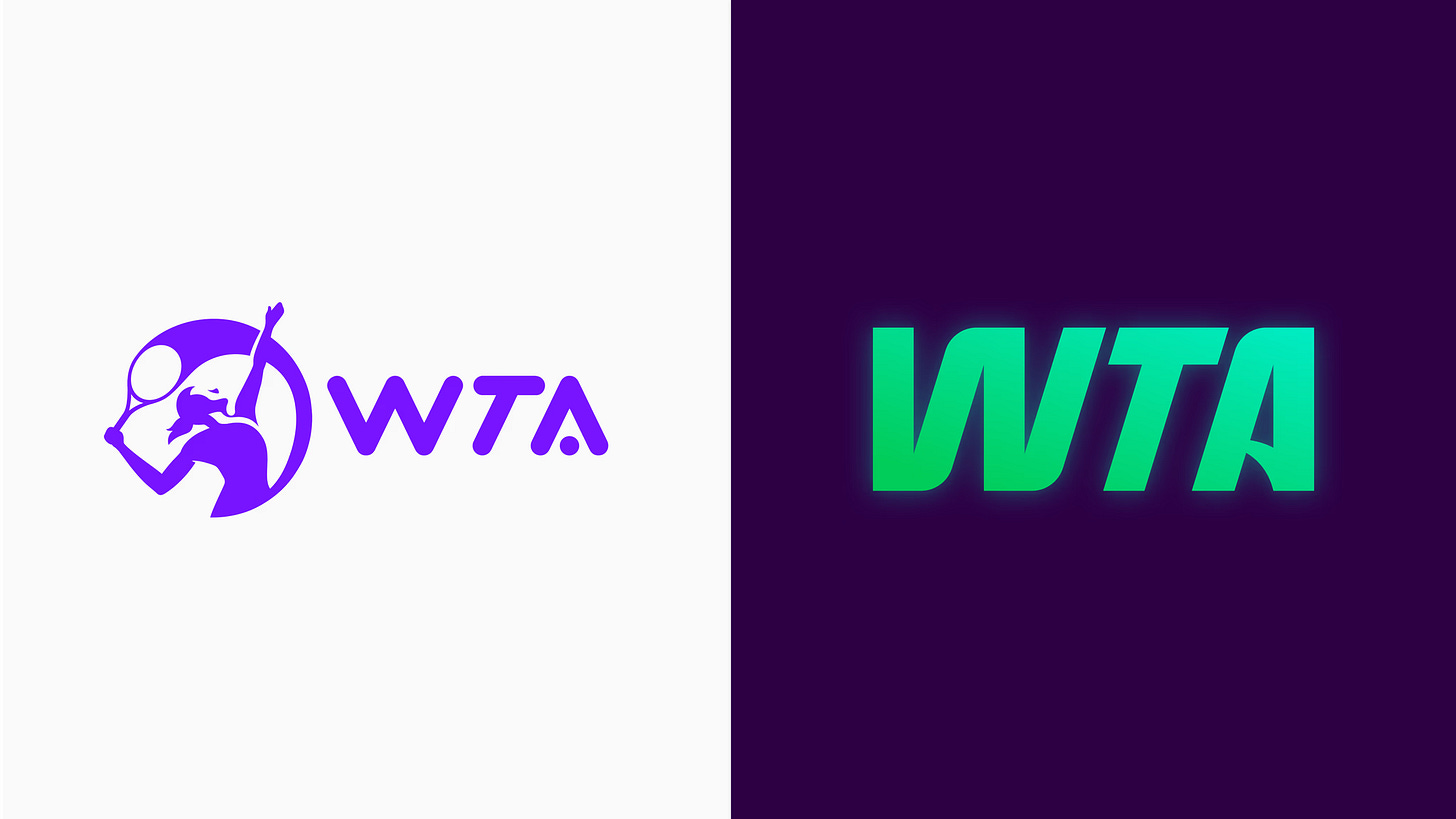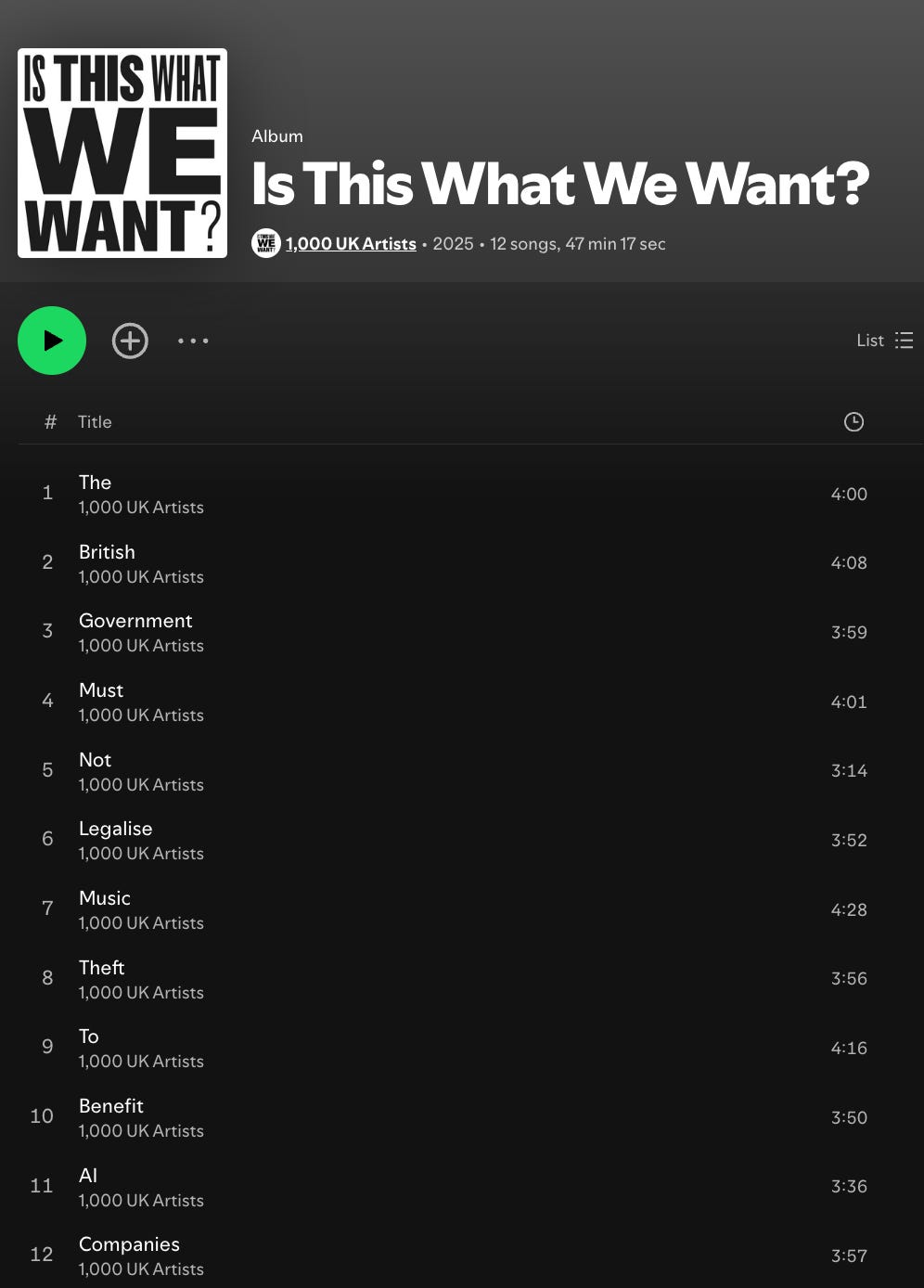All The World's A Court
Visual eye-candy from tennis, electricity & burning plants; passive viewing must go; drunk-dialling Youtube.
You can be fans of a sport. Of people who play it. Of little electric devices. Of planet Earth. Of creative voices. And you would find something of appeal in this week’s dispatch.
Some eclectic eye candy wrapped up in The Colour Bar today. The WTA’s shiny new rebrand takes centrestage (centre court?), As the WTA leans in to its greatest asset, its athletes. “People don’t fall in love with leagues: They fall in love with athletes…” is the at the core of their new proposition, Rally The World. With a shiny new look and strong message, its worth looking at. Some burning plants and Schneider’s humble circuit-breaker tell their stories too. That’s in Curated/Cuts.
I look at the increasing talk around how sports-viewing must be a multi-headed, multi-dimensional beast; a clamour for mainstream sports to have a cold hard look at how they deliver themselves to fans, visiting a fine piece on this that brings us an example from Brazil. Elsewhere, researchers took a different stab at analysing Youtube’s billions of hours of content- the odd case of “drunk-dialing” Youtube reaches some fascinating conclusions.
+ Quickies on White Lotus tourism, a podcast that wonders if streaming is Pay TV 2.0, and a browser that is mindful.
Breath deeply, and read.
Curated/Cuts.
1. The WTA has a rebrand!
With the intent to bring their players centrestage, the WTA lets us know that the tennis court is not merely a sports arena but a stage for the best players to express themselves.
There’s a new logo- yes, its trimmer and sleeker; a new visual identity- shiny, slick, dynamic; all wrapped with a call to “Rally the World”.
The lead spot talks of the need to “unleash my rebel soul”.
Spot crafted by Brothers & Sisters.
The identity has been devised & designed by Chapter X and Nomad.
“This isn’t happening by chance: Since 2023, the WTA’s commercial branch, WTA Ventures, has been trying to bring more investment into the sport and increase the profile of the WTA’s players, tournaments, and associates. During its first full year in 2024, WTA Ventures and its co-founders at CVC Capital Partners increased the WTA’s revenue by 25%—with an ultimate goal of tripling revenue by 2029.” Jason Note , Adweek.
A fine case study here from the team at Chapter X.
2. You know the circuit-breaker, yes?
I am reliably informed that it is ‘a safety device in electrical systems that automatically interrupts the flow of electricity when it detects an overload or fault, such as a short circuit. It works by tripping or switching off the power to a circuit when current levels exceed safe limits, and it can be manually reset once the issue is resolved. This helps prevent damage to electrical components or fire hazards.i
This little ‘thingy’ just completed 100 years of existence- not exactly the kind of birthday we are all plugged in to and await in a surprise party with the lights off (see what I did there).
Schneider Electric on the other hand, has a more intimate relationship with it, and has produced a lovely happy little story to celebrate “100 years of the humble circuit breaker”.
Shaped by Riff Raff Films with Smith & Foulkes.
3. Burn ‘em Plants!
Make My Money’s latest spot features some easy-burning plants, and the comedian/actor Ambika Mod amidst them.
A UK organisation that “believes money should be moved from the destructive, harmful investments of the past”, Make My Money pushes citizens to ensure their money is pulled away from climate-destroying pathways. This is their fourth high-profile spot in the last year or so; probably the one that relies least on the actor ‘owning’ the screen; but all the spots have a clever undercurrent of playing with words, ideas and symbolic visuals.
This, and the first one with Kit Harrington & Rose Leslie (aka Jon Snow and Egret, real life couple), rely on a ‘reveal’, which is quite effective. While the two spots with incredible thespians Olivia Coleman and Benedict Cumberbatch (or more accurately, Oblivia Coalmine and Benedict Lumberjack) waste no time in making clear the agenda, hitting us square on the head with the message, though delivered with oh-so-much class.
The Hidden Relationship:
Coalmine:
Lumberjack:
Since 2020, Make My Money has been “fighting for a world where we all know where our money goes, and where we can demand it’s invested to build a better future”; but the campaign is now shutting down as donations dry up, as CEO Tony Burdon shared a few days ago.
Die, passive viewing, die!
Sports must change! Fans are not the same! Viewership has transformed! Sports organisations are stuck in the past!
There are many calls for this going around, especially if you are anywhere on the peripheries of the sports business. One way this manifests is in being innovative with new sports and sports themselves (which I have been writing about). The other, and easily as interesting angle, is what existing sports and their caretakers must do to ensure fans are served what they need- with a particular focus on younger demos, and the exhausting trope of dying attention spans. Note- its a cliche and its exhausting, but it is not untrue (just occasionally misused).
Callum McCarthy frames that particular point well when he says about shortening attention spans, “This isn’t because we have chosen to become deficient human beings. It’s because the world around us has gotten a lot more stimulating, and because we actually prefer it that way.” I think separating the ‘inferior’ view of this is important.
That’s from a piece of his on precisely this topic; called “The power of chat: Can sport adapt to the death of passive viewing?”. He reiterates thats viewing sport cannot be a “one-dimensional” experience anymore, going beyond the simplistic option of reducing duration of most existing games. The analysis spans the King’s League, streamer Kai Cenat (inevitably), and Cazé TV, a very successful free-to-watch YouTube and Twitch channel in Brazil.
The case of Cazé TV in particular I had not heard of before, and found very interesting; its success with showing high profile premium sports (including the FIFA World Cup), fronted by streamer Casimiro could well be the path many regions look at. While Callum acknolwedges that Europe has some ways to go before employing that model, I am curious if it could apply in parts of Asia. And my instinct is, I am not so sure.
Certain sports here and their following are derivative of how they are covered, shaped and presented globally; others are hyper-local and have a healthy ecosystem in place; others still are in markets where access to sports coverage is still not skewered by high price-points; and complemented- not supplanted- by social coverage. Think variously of these across India, Singapore, Philippines, and many others. Though- very relevant to markets such as Asia, was this quote from Barrick Prince.
“The reality is that these younger generations don’t think that clicking a link on Reddit to a pirated feed from Asia is stealing. That’s just how you watch the game.”
Do read the piece, especially for the Cazé TV story.
Drunk Dialling Youtube
I recently gushed about Youtube, touching upon different aspects- their increasing primacy on connected TVs, their CEO’s aims for 2025, its place and influence in our cultural landscape, and how legacy media was leveraging it.
I also all-too briefly touched upon how the content on the platform was becoming increasingly professional, and the ecosystem ‘corporatised’. This in itself is neither good nor bad, but it does reflect a moving away from 'roots', in some respects. While the tremendous volume of hours on Youtube continue to be mostly what you'd call ‘user-generated’, the vast majority of its engagement, monetisation and numbers comes from successful members of the creator economy, a tiny number.
So here is a slightly different take on the platform, courtesy of a study challenging common assumptions. For a platform this massive—2.5 billion users, 100 million years' worth of videos watched annually—Google keeps a lot of basic facts hidden. While the platform offers self-expression and access to media, its algorithms shape knowledge and opinions, and its opacity makes it difficult to study.
In ‘Dialling for Videos,’ researchers at the University of Massachusetts designed a scraper to "drunk dial" YouTube, randomly generating URLs to uncover hidden data. It revealed a more diverse and less professionalised landscape than many might realise. Most videos aren't focused on monetisation or racking up subscribers- instead, YouTube often serves as a digital archive or a space for sharing content with smaller audiences.
“For all practical purposes, one of the most powerful communication systems ever created – a tool that provides a third of the world's population with information and ideas – is operating in the dark.” _Thomas Germain.
Their findings using this method of random sampling & extrapolation are interesting:
86.93% of videos have fewer than 1,000 views
4.88% of videos are never watched at all.
Most videos have no comments (72.64%) and no likes (88.71%)
Only 0.21% of videos are monetised
Storing video or sharing content with a small audience is far more common than creating videos seeking an audience of millions
Thomas Germain explores the study nicely here, echoing some of the points the authors make. The findings underscore the need for greater transparency and thoughtful regulation given YouTube’s significant role in public discourse, and its role as a ‘de facto digital public infrastructure’.
Food for thought.
Quickies
On February 25, over 1,000 artists released 'Is This What We Want?', a silent album in protest of planned changes to copyright AI laws planned by the UK government. An album of recordings of empty studios & performance spaces, it represents the effect the government proposals would have on musicians' livelihoods. The track list spells out a simple message: "The British Government Must Not Legalise Music Theft To Benefit AI Companies".
Artists included Annie Lennox, Hans Zimmer, Riz Ahmed, Kate Bush, Yusuf/Cat Stevens, Tori Amos, Max Richter and many others.
Veteran journalist Vanita Kohli-Khandekar looks at different perspectives on streaming— is it PayTV 2.0?— with an India lens added on. In this podcast on The Core, she brings us three perspectives from Tony Gunnarsson /Omdia, Vivek Couto /MPA & Sameer Nair /Applause Entertainment.
We have heard and read about the ‘White Lotus effect’ on tourism before. There were significant spikes in visits to Sicily and Hawaii in general, and the resorts featured in the show specifically, after the first two seasons of the hit HBO show. Now, expectedly given the Thailand Tourism Authority was a partner- we are hearing more about how Season 3 has been driving interest in Thailand from very early on.
Opera Air claims to be "the first browser built around the concept of mindfulness." ‘Air’ is designed as a browser that functions like Chrome, Firefox, Safari but also "helps users manage stress, enhance focus, and maintain emotional clarity throughout their day.” Wow, that’s a lot of helping! Here is the mindfulness-themed browser trying to shake things up, calmly.
That’s the Colour Bar- where creativity, content, culture, tech, brands & humanity collide.




